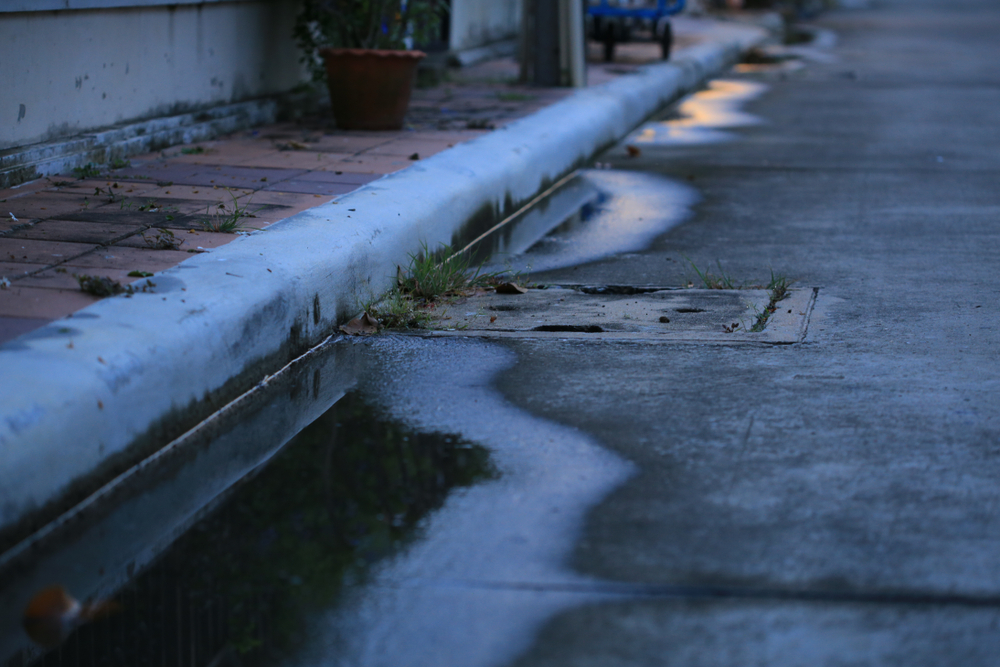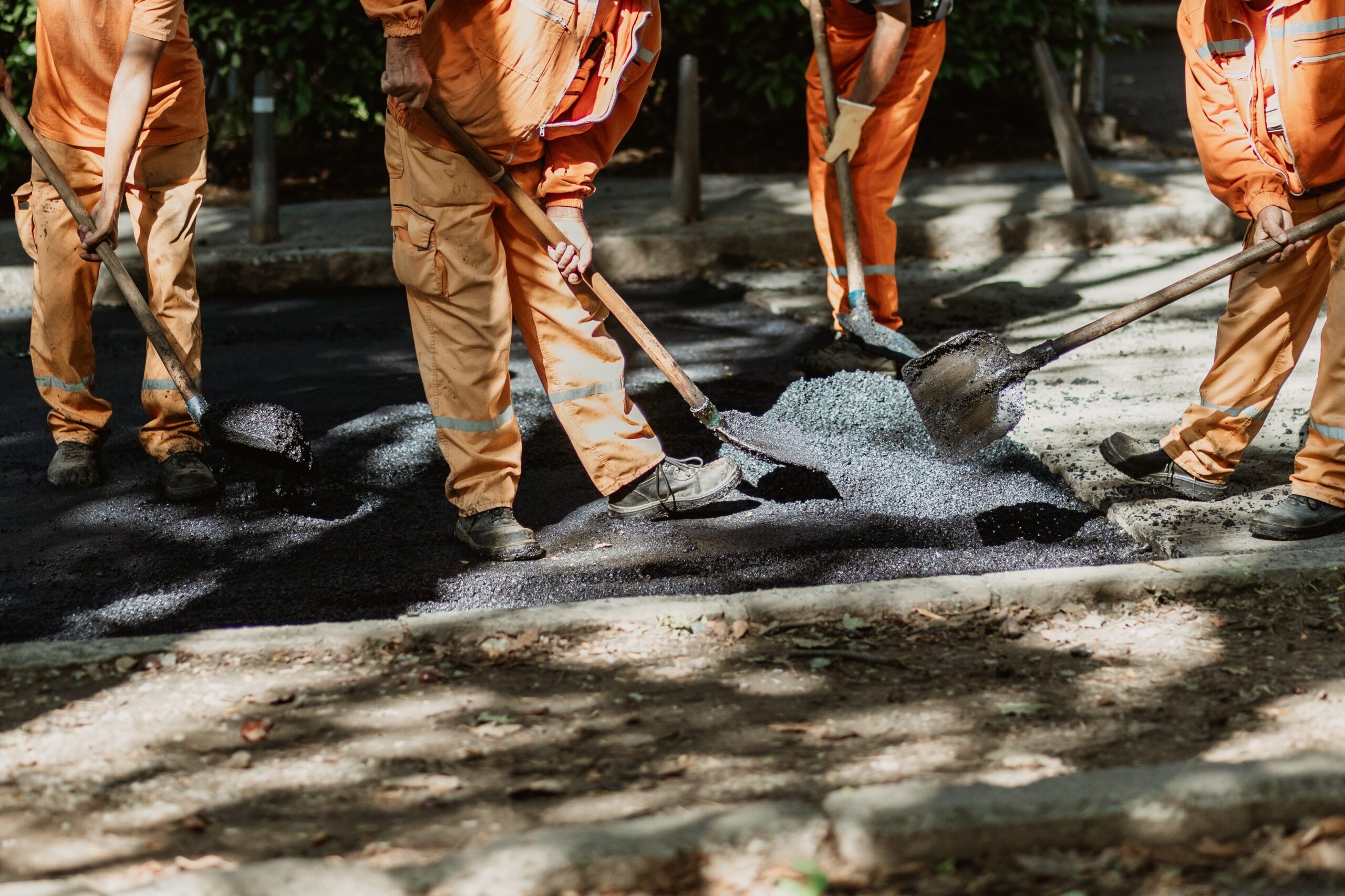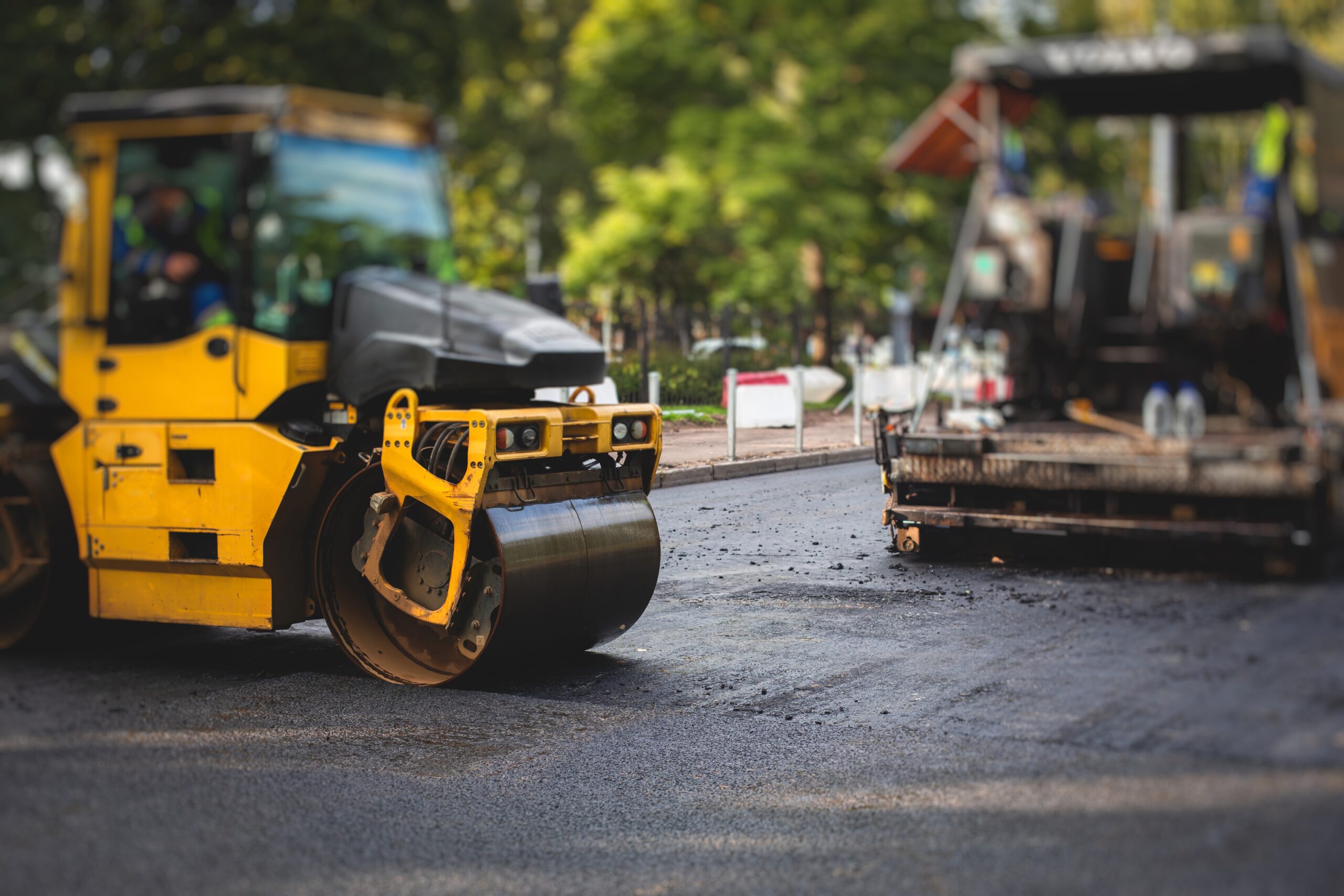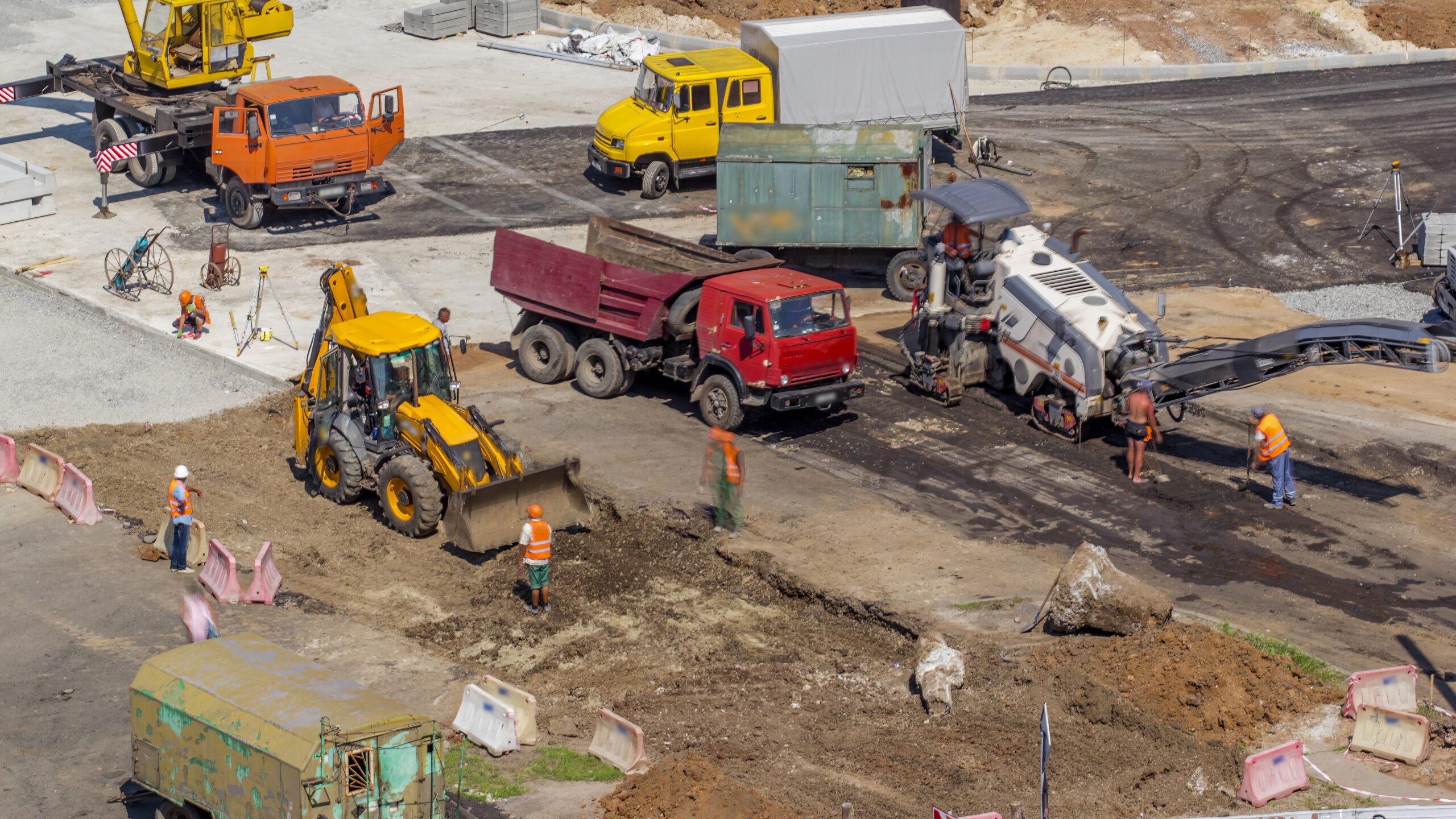
Concrete is renowned for its strength, durability, and low maintenance; however, poor drainage can silently compromise its integrity. Many property owners are unaware that water, not age, is the primary cause of concrete damage.
When drainage fails, water doesn’t just stain the surface; it also seeps into the soil. It weakens concrete from the inside out, erodes its subbase, and triggers cracks, settling, spalling, and costly structural problems, underscoring why proper drainage is crucial for asphalt longevity.
Let’s examine how improper water flow damages concrete over time, the warning signs, and how to prevent irreversible damage through innovative site management.
Why Is Drainage So Important for Concrete?
Concrete may be strong, but it’s not invincible. It’s a porous material that slowly absorbs moisture. If water pools on or under the surface, it begins to break down the internal structure and the surrounding subgrade.
Drainage ensures water moves away from the concrete surface and does not accumulate underneath. Without proper grading, water causes hydrostatic pressure, erosion, and repeated freeze-thaw cycles, each of which compromises the concrete’s structural integrity.
How Poor Drainage Damages Concrete Over Time
Poor drainage will damage your concrete in the following ways:
1. Subgrade Erosion Causes Concrete Settlement and Cracking
The base layer beneath concrete, known as the subgrade, is essential for support. If water consistently flows under the slab due to improper grading or clogged drains, it begins to erode the soil beneath it.
Over time, voids form beneath the slab, leading to uneven weight distribution. This causes:
- Hairline cracks
- Structural cracks
- Slab settling or sinking
- Uneven surfaces (trip hazards)
This issue is common in driveways, sidewalks, patios, and commercial concrete pads. Settlement becomes more pronounced in soils that are clay-heavy or loosely compacted, which is often an indicator of signs your asphalt needs immediate repair.
2. Freeze-Thaw Cycles Widen Cracks and Surface Damage
In colder climates, such as Colorado, freeze-thaw cycles are particularly destructive. Water trapped inside or underneath concrete freezes and expands, applying internal pressure. As temperatures rise and fall, this cycle repeats, creating wider cracks and surface scaling.
This process leads to:
- Expansion and contraction stress
- Increased surface cracking
- Broken edges (especially on curbs or sidewalks)
- Long-term delamination
Even small cracks can absorb moisture. If not sealed, each winter worsens the damage exponentially.
3. Ponding Water Accelerates Surface Wear and Staining
When a slab isn’t sloped correctly, water pools or “ponds” on the surface. Standing water slowly wears away the finish layer. Combined with vehicle traffic, de-icing chemicals, or UV exposure, surface spalling becomes inevitable.
Symptoms include:
- Discoloration or staining
- Surface pitting
- Scaling or flaking concrete
- Exposed aggregate
Poor drainage is a key contributor to pavement failure. Addressing the root cause—poor grading, clogged drains, or inadequate slopes—is the first step toward long-lasting concrete or asphalt. This proactive approach is central to understanding why parking lot maintenance saves money.
4. Efflorescence Indicates Water Penetration
Efflorescence is the white, powdery deposit that appears on concrete surfaces when water migrates through it and evaporates. While not structurally damaging on its own, it is a visible sign of poor drainage and moisture problems within the concrete.
This usually means:
- Water is passing through the slab or wall.
- Drainage or waterproofing has failed.
- Long-term saturation may cause internal weakening.
Ignoring efflorescence may lead to more serious problems, such as mold growth, corrosion of steel reinforcements, or degradation of load-bearing strength.
5. Corrosion of Reinforcement in Concrete Structures
In reinforced concrete, trapped moisture can cause the corrosion of steel rebar over time. When drainage allows water to saturate the slab or foundation, oxidation (rusting) of steel occurs, expanding the metal and cracking the surrounding concrete.
Corroded rebar leads to:
- Concrete spalling
- Reduced tensile strength
- Structural failure in beams, columns, and foundations
This is especially critical in parking structures, multi-story buildings, and industrial foundations. Poor drainage accelerates internal rust long before the damage becomes visible.
6. Water Intrusion into Foundations and Basements
If exterior concrete (such as walkways or driveways) slopes toward the structure, water is directed toward the foundation. Over time, moisture seeps through cracks or poorly sealed joints and enters basements or crawl spaces.
This creates:
- Mold and mildew buildup
- Damp, musty smells
- Foundation shifting or wall cracking
- Expensive interior repairs
The combination of poor drainage and aging concrete near the perimeter of buildings is a leading cause of water-related structural issues.
7. Erosion of Expansion Joints and Seals
Concrete is known for its incredible strength and ability to handle extremely heavy loads over decades. However, it requires specific conditions and maintenance to achieve this longevity. This comparison is often made when asking asphalt paving vs concrete which lasts longer.
Effects include:
- Weakened joints
- Joint separation
- Weed growth between slabs
- Increased cracking near seams
Regular joint sealing only helps if drainage systems support proper water redirection.
8. Heaving Due to Hydrostatic Pressure
Water that builds up under concrete due to poor drainage can create hydrostatic pressure, a force generated by the accumulation of fluid in the soil. This pressure can push concrete upward (known as “heaving”) or inward in foundation walls.
Hydrostatic pressure causes:
- Uplift of concrete slabs
- Cracking and tilting of floors
- Basement wall bowing
- Long-term foundation instability
Installing proper perimeter drains, also known as French drains, helps prevent this destructive water pressure.
Signs That Drainage Is Damaging Your Concrete
You don’t need to wait for structural failure to recognize the signs of poor drainage. Watch for these early warning signs:
- Pooled water near or on slabs after rain
- Discoloration or efflorescence on the surface
- Hairline or diagonal cracks forming
- Slab edges lifting or tilting
- Water stains on basement walls
- Gaps between expansion joints
- Flaking or crumbling surface areas
- Moss or algae growth around concrete edges
If you spot these issues, it is likely that water is not being drained effectively away from your concrete.
What Causes Poor Drainage Around Concrete?
Understanding the source of drainage failure is crucial to resolving the issue. Common causes include:
- Improper grading: The ground should slope away from structures and slabs.
- Clogged or missing gutters: Overflowing downspouts dump water directly onto slabs.
- Lack of drains: Areas like driveways, patios, or loading docks need proper channel drains or trench drains
- Improper sub-base compaction: A weak base allows water to pool underneath.
- Old or failing sealants: Unsealed cracks absorb water more easily.
- Disconnected downspouts: This can lead to water pooling at the foundation.
Correcting these issues early can prevent severe concrete failure down the line.
Preventive Measures to Protect Concrete from Drainage Damage
To extend the lifespan of your concrete and prevent costly repairs, adopt the following strategies:
1. Proper Grading and Sloping
Ensure your property slopes away from the building and all slabs. Concrete flatwork should have a minimum 2% slope to direct water away from the area.
2. Install Drainage Solutions
Use French drains, trench drains, or catch basins in areas prone to pooling or overflow. Connect downspouts to underground drain pipes.
3. Seal Cracks and Joints
Annual crack sealing helps keep water out of your slab. Use high-quality, flexible sealants on expansion joints and all surface cracks to prevent leaks.
4. Apply Concrete Sealers
Concrete sealers prevent moisture absorption, reduce freeze-thaw damage, and increase surface longevity. Choose penetrating sealers for high-traffic areas, which is a tip for winter parking lot maintenance tips for safety care.
5. Maintain Your Drainage System
Clean out gutters and drains regularly. Ensure all connections are intact and properly routed.
6. Repair Surface Issues Promptly
If cracks or spalling are present, address them early. Infrared patching or concrete resurfacing can stop the damage from spreading.
How Can Long-Lasting Concrete Be Achieved with Proper Drainage?
When drainage is managed correctly, concrete can last 30 to 50 years or more. Without it, deterioration may begin in just 5–10 years, especially in climates with freeze-thaw cycles or heavy rain.
Many commercial and residential failures are not due to poor concrete, but rather to poor water management. Investing in a strong drainage plan protects your concrete, foundation, and property value.
Get Professional Help for Concrete and Drainage Issues in Colorado
If your concrete shows signs of cracking, settling, or water damage, don’t wait. Water problems rarely remain the same. They always worsen over time.
Asphalt Coatings Company specializes in commercial concrete preservation and drainage protection services. Since 1986, we’ve helped property managers, industrial owners, and business complexes in Colorado extend the life of their pavement and protect structural integrity. Contact Asphalt Coatings Company at (720) 526-3057 for a complimentary inspection and drainage evaluation, or request your estimate online and safeguard your concrete from the one thing it can’t overcome on its own: standing water.



